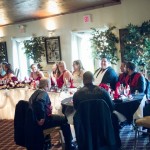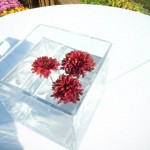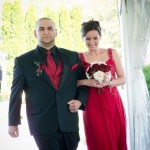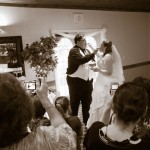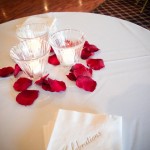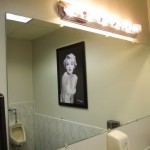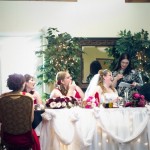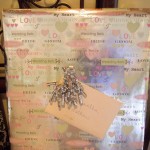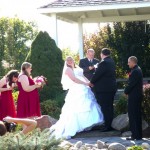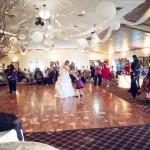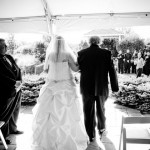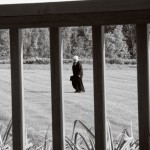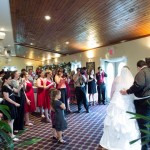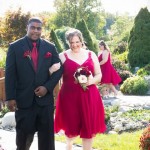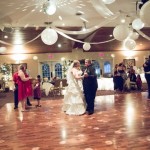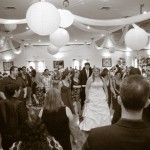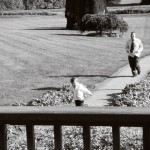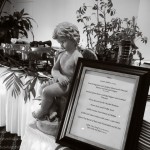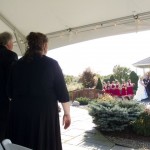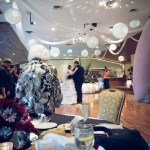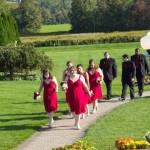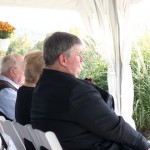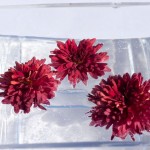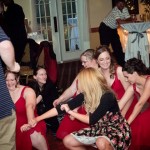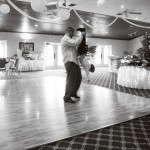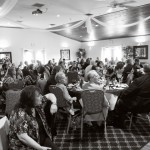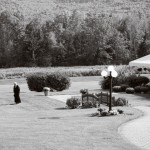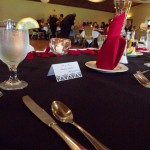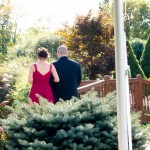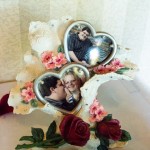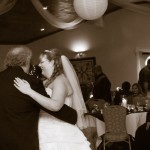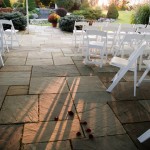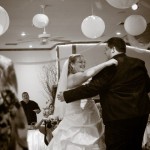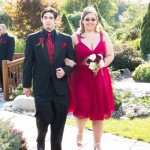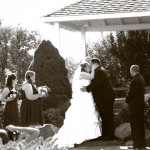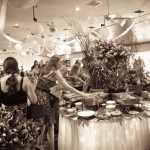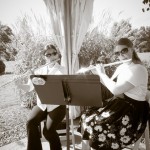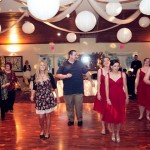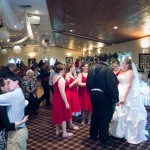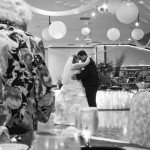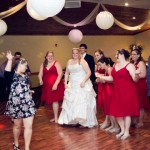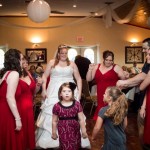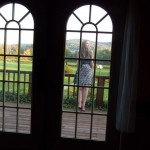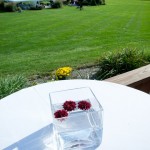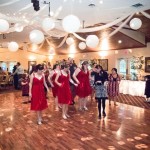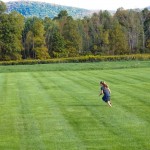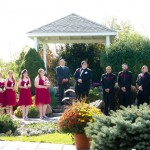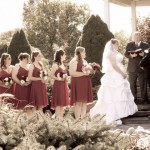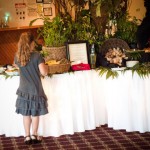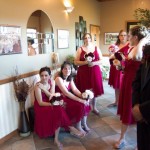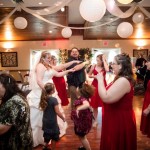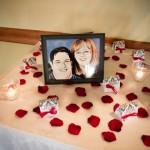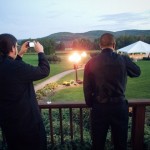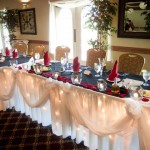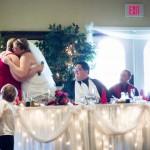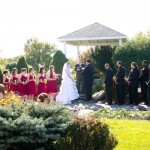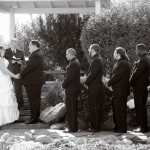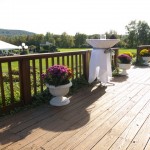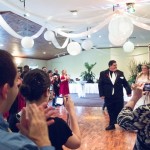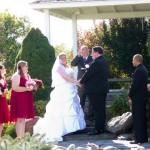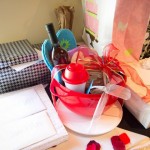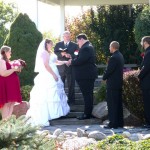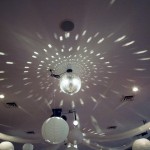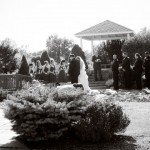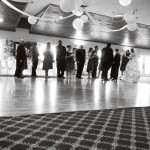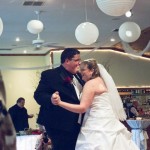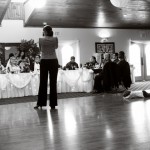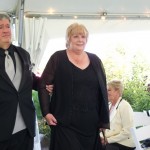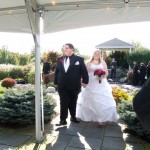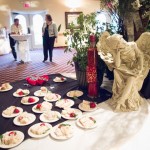There seems to be a lot of interest in choosing lenses for wedding photography. I am asked this question by colleagues and I’ve noticed a number of people come to this blog looking for this information.
I addressed this question in a previous post, but I would like to list specific recommendations based on the camera or cameras you own. Unfortunately, I will only be doing this for Canon DSLR equipment, because that’s what I own and am most familiar with. If you’re a Nikon (or some other brand) camera user, you may still be able to find and use the equivalent lenses that apply to your camera.
When I think about lenses for wedding photography, I like to break the typical wedding day up into the separate stages: i.e., getting ready, pre-ceremony, ceremony, post-ceremony, group formals, and reception (I sometimes further break reception down into early and late). Also, it makes a difference whether the ceremony and/or reception is indoors or outdoors.
As I start composing this post, I realize there are a *lot* of considerations I could list based on the specific circumstances of the particular wedding you’re shooting. But I don’t have the time to write “that” tome right now (maybe an e-book later on??).
So, I’ll go with a more general guideline sort of post.
Outdoor Ceremony and Reception
If it’s an outdoor ceremony and reception, and you’re not taking any “getting ready” shots, this is the easiest scenario there is. You just need a good quality zoom lens and it doesn’t have to be particularly fast (i.e., it doesn’t have to have a large maximum aperture). If you’re using two cameras and one of them is a full-frame (e.g., a Canon 5D), put a 24-105 f/4 IS on the full-frame camera and a 70-200 f/4 (IS or non-IS) on the other camera and you’ve got great outdoor coverage!
If you’re looking for an inexpensive combination that still gives decent quality, using a 18-55 IS and a 55-250 IS lens (these are inexpensive, but good quality plastic EF-S lenses) on one or two Digital Rebels or Canon 20D/30D/40D/50D series cameras (these are all 1.6x crop factor cameras) can work quite well.
Indoor Getting Ready & Pre-Ceremony
Once we move indoors, I find it necessary to have at least f/2.8 constant maximum aperture lenses. Also, you want to be able to go quite wide (at least 24mm, full-frame equivalent). A 24-70 f/2.8 lens on a full-frame camera or the 17-55 f/2.8 IS lens on a 1.6x crop factor camera will cover these shots quite nicely. I’m particularly fond of the 16-35 f/2.8 lens (on either a full-frame or 1.3x crop factor Canon 1D series camera), but then you’ll probably want to make sure you have a second camera with a lens somewhere in the 50 to 100mm range (e.g., a 85mm f/1.8).
Indoor Ceremony
You should be prepared for the indoor ceremony location to be dark. If isn’t, you’ll be fine with lenses that can handle a dark indoor setting. The reverse (being prepared for an indoor setting with ample light, but then finding out it isn’t so), can be quite problematic!
Now, indoor ceremonies can occur in anything from large, palatial churches to small conference-sized rooms. In almost any scenario, the 70-200 f/2.8 (IS or non-IS) lens is your friend! You’ll also want to get some wide shots with your 16-35 f/2.8, 24-70 f/2.8 or 17-55 f/2.8 IS lenses. I always shoot ceremonies with two cameras and two lenses. However, you could get away with just a 24-70 f/2.8 (on a full-frame camera) or a 17-55 f/2.8 IS (on a 1.6x crop factor camera) if the ceremony isn’t occurring in a huge indoor facility…*or* if you’re able to move around very freely without disturbing the wedding officiant or the rest of the ceremony audience.
Post-Ceremony (Indoor and Outdoor)
After the ceremony, there may be a receiving line; and this receiving line may or may not occur outdoors (depends on weather and the ceremony facility’s particular configuration). This is another case where it’s best to be prepared for low light conditions, though you may end up outdoors with great light. The lenses you used for the ceremony will usually work fine here.
Group Formals
The main consideration here is to be able to go quite wide in case you’re taking the formals in cramped quarters with a large group. You’re going to want to use a relative small aperture to keep everyone in focus; so a f/2.8 lens here isn’t necessary. However, since the formals often happen right after the ceremony, using the 16-35 f/2.8, 24-70 f/2.8, or 17-55 f/2.8 lens that is already on your camera should work quite well. (Note: the full-frame equivalency of 17mm on a 1.6x crop factor camera is 27.2mm; this may not be wide enough for the very largest group in a cramped indoor area. You may want to carry a very wide prime lens for such instances if you’re only working with 1.6x crop factor cameras.)
Indoor Reception
Indoor receptions tend to occur at night in dark rooms with low lighting. In addition, you’re often photographing people moving around (e.g., dancing) in this darkness! Until it gets truly dark at the reception (sometimes receptions begin with lots of light streaming in through windows or with all the lighting turned way up)–or if you don’t mind relying on flash or off-camera lighting–you can often get by with the lenses you used for the ceremony (i.e., 16-35 f/2.8, 24-70 f/2.8, 17-55 f/2.8, and/or 70-200 f/2.8).
Though I use flashes and off-camera lighting for some of my reception photos, I don’t like taking *all* of them with “superficial” lighting I have generated. As the evening wears on and it becomes totally dark outside, I take out some large maximum aperture prime lenses to capture some indoor, existing low light shots. There are many to choose from. Some typical choices: 24 f/1.4, 28 f/1.8, 35 f/1.4, 50 f/1.2 or f/1.4, 85 f/1.2 or f/1.8, 100 f/2, and 135 f/2, to name a few.
The *really* expensive lenses here ($1200 and more) are the 24 f/1.4, 35 f/1.4, 50 f/1.2 and 85 f/1.2. Personally, I hate having too much money wrapped up in one fixed focal length; there’s no one focal length that I use enough to justify the cost of these lenses. I think the 50 f/1.4 is a good buy and a good lens to have around. The other fast primes I listed are more affordable, but are a matter of personal choice.
Whichever fast prime lenses I decide on, I start putting on the camera as the reception wears on. I think it’s important to keep one relatively wide zoom lens around for any wide-angle photos you may need to take with flash or off-camera lighting, like the tossing of the bouquet across the width or length of the dance floor. I try to offload the 70-200 f/2.8 lens to my car if possible because who needs to be carrying around all that weight!
Overall Recommendations
If you’re like me, you own a bunch of these lenses and you choose a different combination to bring to each wedding, depending on the particular circumstances of that wedding. For me, my main challenge is to choose the most efficient combination of lenses for each wedding that allows me to take all the types of photos I’ll want to take without having *all* of my lenses with me!
Now, if you’ve got a limited budget for camera equipment to be used for photographing weddings (which even I have, but sometimes don’t admit to myself…;-), here’s what I would recommend buying:
1) You pretty much need one or two f/2.8 maximum aperture lenses, unless you *never* photograph indoor weddings.
If you’ve got a 1.6x Digital Rebel or 20D/30D/40D/50D series camera, buy the kinda expensive but high quality 17-55 f/2.8 IS lens. If you’ve got a 1.3x crop factor 1D series camera, buy the 16-35 f/2.8 lens. If you’ve got a full-frame 5D series or 1DS series camera, buy the old standby 24-70 f/2.8 lens. You can buy these used if you need to save money (I do this sometimes).
I really like the 70-200 f/2.8 IS lens, and would recommend you buy it whether you’ve got a full-frame, 1.3x, or 1.6x camera. However, this is an expensive lens. For a less expensive “work-around”, consider the 100 f/2 or 135 f/2 prime lenses to be your “go to” telephoto lenses. The 100 f/2 is cheaper and probably a better choice if you have a 1.6x crop factor camera (the full-frame equivalency is 160mm on a 1.6x camera).
2) Get the 50 f/1.4 prime lens. It’s the only f/1.4 lens you can get for under $1000 (it’s less than $400!). And it’s a very flexible focal length: it’s a “normal” lens on a full-frame camera, it’s the equivalent of 65mm on a 1.3x crop factor camera, and it’s equivalent to 80mm on a 1.6x crop factor camera.
With these 3 lenses and your 1-2 cameras, you can do a very nice job photographing most weddings, indoor or outdoor.
When/if you start to get more money to invest in lenses, you can start to branch out to some of these other potentially very useful lenses. For example, a good one for general outdoor, one camera use is the 24-105 f/4 IS L.
That’s it for now. Good luck!

Visit Michael's Art Photography Portfolio at SaatchiArt.com!
|





